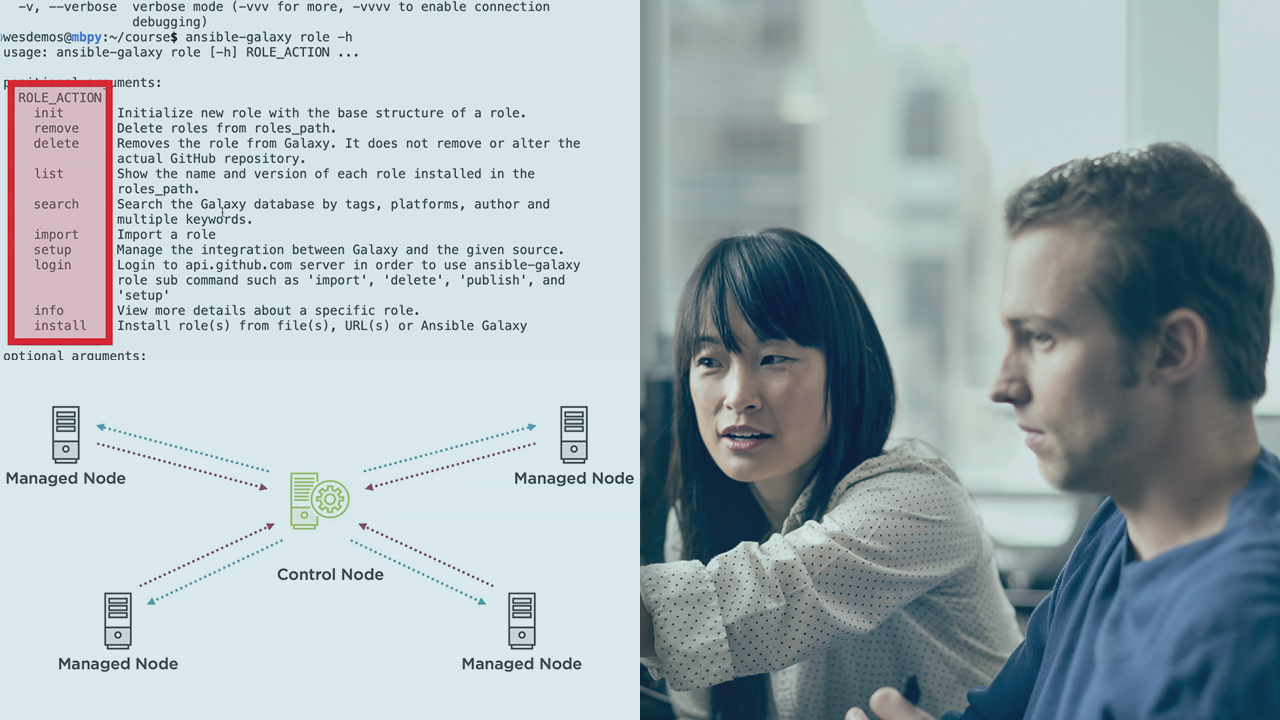01. Configuring an Explosion of Devices
02. Using the git config Command to Manually Configure User Name and Email
03. A Repeatable Script to Automatically Configure Git with user.name and user.email
04. git config --add Is Not Idempotent Because It Duplicates Config
05. Desired State Reconciliation and the Power of Ansible
06. Installing Ansible and the Installation Guide Docs
07. Updating Ansible via pip or Otherwise
08. Leverage the Porting Guides
09. Know How to Know What You Need to Know as You Go
10. Why Installs and Even Updates Are Easy - Control Node Architecture
11. The Ansible Ad-hoc Command
12. Disseminating a .gitconfig with Ansible Ad-hoc and the Copy Module
13. Understanding Idempotence with the Copy Module
14. How Ansible's Copy Module Handles Drift Thanks to Idempotence
15. The --check Flag Simply Checks if Changes Would Be Made
16. The --diff Flag Shows What Will Change or Did Change

